Using Games to Teach Piano Students How to Improvise
This post may contain affiliate links. If you purchase something through an affiliate link, I will receive a small commission at no cost to you. For more information, read the disclosure statement here.
As piano teachers, we all want to help our students develop a wide variety of musical skills. One of the most powerful and rewarding ways to do this is by introducing improvisation into their piano lessons.
Improvisation is a fabulous skill for piano students of all ages to develop.
It allows students to express their own creativity and musical ideas, helps build their confidence, increases their understanding of music theory, and so much more.
Plus, improvisation provides an easy way to infuse something new into piano lessons, and a safe way for even the most apprehensive students to succeed with a little guidance!
So let’s take a look at some of the benefits of improvisation, some tips and examples for using engaging games to teach piano students how to improvise, and some ways to help students improvise during daily practice sessions.
5 Reasons to Teach Piano Students How to Improvise
Improvisation is a skill that can help piano students develop their creativity, musicality, and confidence.
Improvisation allows students to express themselves in their own unique way with their own ideas and perspectives that are different from anyone else’s.
By incorporating improvisation activities into your lessons, you can help your students become more imaginative, creative, and confident musicians.
Here are 5 important reasons we should teach piano students how to improvise.
1. Improvisation Encourages Creativity
Improvisation naturally encourages students to experiment with different sounds, rhythms, and styles.
This experimentation helps them learn to express their creativity and individuality through their playing.
Expressing themselves in this way can be incredibly empowering for students by allowing them to take ownership of their playing and develop a deeper connection with music.
If you teach piano students how to improvise, you can help open the door to massive creativity!
2. Improvisation Expands Musicianship
By improvising, students can develop a deeper understanding of music and its elements, such as melody, harmony, rhythm, and form.
Improvising can help students develop their sense of melody and phrasing as they explore different melodic ideas, especially if they’re learning to improvise based on a short series of specific pitches. (I’ll tell you more about that below.)
If students aren’t ready to improvise pitches just yet, they can still take a step towards improvising at the piano by creating and performing simple rhythm patterns in a variety of styles.
When improvising, students will naturally begin making decisions in real-time about how to structure their musical ideas.
This can lead to more questions about musical structure and form, which can be a terrific jumping-off point for more detailed discussions during their lessons.
3. Improvisation Builds Confidence
Improvisation can help even the most apprehensive students overcome their fear of making mistakes because it allows them to experiment and take small risks in a safe and supportive space.
This can boost their confidence and help them feel more comfortable experimenting with unique sounds and rhythms, even if they’re a concrete-sequential learner like I am, who struggled with the more abstract activities like improvisation when I was a child.
By encouraging piano students to experiment and take small risks, you can create a safe and supportive environment where students feel secure in exploring their unique musical ideas.
This can be incredibly liberating for students (especially your concrete-sequential learners!) because it allows them to develop confidence in their playing without fear of making mistakes or doing something incorrectly.
When you teach piano students how to improvise, they can feel their confidence increase with each new improvisation activity.
4. Improvisation Develops Ear Training Skills
In addition to being a fun and creative activity, improvisation can also be a practical skill for students to develop.
By improvising along with you or with other piano students, simultaneously or in turn, they are developing their ability to listen, adapt, and respond to the music that is happening around them.
This is a terrific activity for develop your students’ ear training skills, which can be incredibly helpful in real-world performance situations where musicians frequently need to adapt to in-the-moment changes in tempo, dynamics, or other musical elements.
5. Improvisation Enhances Performance Skills
As mentioned above, improvisation can help students become more adaptable and flexible in their playing.
This is very helpful if they do a lot of accompanying (soloists, church, high school choir, etc.), performing with ensembles (especially jazz), or playing from memory.
Improvisation can be an excellent way for pianists to hone their performance skills during a performance, which can lead to more creative, expressive, and dynamic performances.
The more we incorporate improvisation into our weekly lessons and teach piano students how to improvise, the more flexibility and freedom they can experience as pianists, and the more creatively they can express themselves in their performances.
Advantages of Using Games to Teach Piano Students How to Improvise
What are some of your favorite ways to teach improvisation? Have you ever thought about using games to teach piano students how to improvise?
Games can be a powerful tool in teaching improvisation to piano students of all ages and levels, starting in the very first piano lesson.
Some students are much more naturally inclined to experiment with their playing in an abstract way and come up with their own ideas, but others may feel intimidated by the idea of creating music on the spot.
I was definitely one of those intimidated concrete-sequential learners as a child!
Using games can help ease concrete-sequential rule-following students into the improvisation process and make it a fun and engaging experience instead of a stressful one.
Games can help them tap into and develop their creativity in a safe, guided, playful, and non-judgmental environment.
When students are given flexible rules and constraints to work within, this can actually encourage them to think more creatively and come up with even more unique solutions.
In addition to providing structure, games also provide a sense of sequential direction, which can be especially helpful for students who feel overwhelmed by the open-ended nature of improvisation and prefer the comfortable boundaries that a loose set of rules can provide.
Another advantage of using games is that games can make the learning process more enjoyable and memorable, and we all know that learning happens most easily when it’s fun!
This can help students associate improvisation with enjoyment and excitement, rather than stress, pressure, or fear of failure.
By using games to teach piano students how to improvise, you can help your students unlock a brand new musical skill in an engaging and non-scary way.
What Games Should We Use to Teach Piano Students How to Improvise?
Now that we’ve talked about several benefits of teaching improvisation, it’s time for the fun part – to start teaching it!
That raises the question, “What games should we use to teach piano students how to improvise?”
My absolute favorite games for introducing students to improvisation are the Music Spelling Bee Games.
These games are originally designed to strengthen piano keys and treble and bass clef note reading, but they can also be used as the perfect introduction to improvisation!
There are several different versions of the Music Spelling Bee Games, each with its own unique benefits.
The easiest game involves identifying the white piano keys, and the most advanced is having students identify treble and bass clef notes up to 3 ledger lines above and below the staff.
Music spelling words created from the letters of the music alphabet are shown on each card: ACE, FADE, BEAD, DEEDED, and DECADE, for example.
Once students have identified the piano keys or notes on the staff, they will use the letters of that music spelling word to improvise a short melody.
Watch this video to learn how to use the Music Spelling Bee Games to teach piano students how to improvise.
Using Music Spelling Bee Games to Teach Piano Students How to Improvise
If you are teaching a beginner piano student who is just starting to learn the basics of music theory (learning the white piano keys or reading the notes of Middle C position), there are Music Spelling Bee Games that will meet their needs.
Or if you’re teaching an advancing student who is reading notes on the grand staff including ledger lines, there are Music Spelling Bee Games tailored to their specific level too.
What are some additional activities we can use to teach piano students how to improvise?
In addition to having students perform an improvisation based on a music spelling word, there are lots of other improvisation activities we can do in piano lessons to teach piano students how to improvise. Here are 4 fun ideas.
1. Rhythm Improvisation
Ask your students to improvise a rhythm using different time signatures. For example, you could ask them to improvise a rhythm using a 3/4 time signature or a 7/8 time signature. If you’re working with young students, use Preschool Rhythm Activity Cards.
2. Chord Progression Improvisation
Have your students improvise a chord progression using the words on the Music Spelling Bee cards. You can provide them with a set of chords or let them create their own.
The most important thing to remember is that there are no incorrect answers. Allow your students the freedom to explore chords in any way they choose.
3. Improvisation Duets
Pair your students up and have them take turns improvising using the words on the Music Spelling Bee cards while the other plays a simple accompaniment also based on that word.
This exercise can help your students develop their listening and improvisation skills while also encouraging collaboration, which is such an important part of music making.
4. Improvised Theme and Variations
Challenge your students to improvise not only a melody, but also variations of that melody based on the words on the Music Spelling Bee cards.
This exercise can challenge your students’ creativity and encourage them to explore different ways to interpret a musical idea.
What Other Ways Can We Use Games to Teach Piano Students How to Improvise?
Here are 5 additional tips for using games to teach improvisation to piano students.
1. Use improvisation activities as a warm-up
Start your lessons with a quick round of Music Spelling Bee Improv to get your students’ creative juices flowing.
This can help them loosen up and get into a more improvisational and creative mindset before diving into the more structured part of the piano lesson.
2. Set a timer for short improvisation sessions
Encourage your students to improvise for short periods of time, such as one or two minutes per music spelling word.
Setting a timer can also help keep the improvisation session focused and purposeful.
3. Incorporate the spelling bee improv games into regular lessons
Use the Music Spelling Bee Games as a regular part of your teaching routine to help your students develop their improvisation skills over time.
As they become more comfortable with the games, you can gradually increase the difficulty level and requirements and components of the improvisation activity to keep them challenged.
4. Improvise conversationally
Emphasize that there are no “wrong” notes in improvisation.
Encourage your students to experiment with different sounds, rhythms, and styles by demonstrating them for your student.
Play a short phrase on the piano and have your student respond with an improvised phrase using the notes from one of the cards from the Music Spelling Bee Games.
Then have a full musical conversation in call-and-response format.
This works well with teacher and student, and it also works well with student and student pairs who are more comfortable improvising on their own.
5. Provide feedback and encouragement
After an improvisation session, take a minute to provide encouragement to your students and support them to keep experimenting and developing their skills.
Positive feedback will build their confidence and motivate them to continue exploring the world of improvisation, especially if they’re still feeling a bit intimidated by the whole process.
By incorporating these tips into your piano teaching, you can use Music Spelling Bee Games to teach improvisation and help your students become more creative and confident musicians, all within an easy-to-implement set of parameters.
How can piano students work on improv at home?
You might work hard to teach piano students how to improvise during their piano lessons, but what about their home practice? How can your piano students continue working on improvisation at home?
Improvisation can be a fun and creative way to practice piano, but it can also be a challenging skill to develop. Here are some tips on how to help your students practice improvisation at home.
1. Provide materials for your students
Send the spelling bee cards home with your students and have them draw a card, identify the notes, and create a short improvisation using the word on the card as inspiration.
2. Use backing tracks and accompaniments
Provide your students with backing tracks and accompaniments to practice their improvisation skills. The iReal Pro app for iPad is a great option.
3. Record and listen
Encourage your students to record their improvisation practice sessions and listen back to them. This can help them identify things they love about what they did, as well as ideas for things they’d like to change the next time around.
4. Practice improvising regularly
Like any other skill, improvisation takes practice to develop. Encourage your students to practice improvisation regularly, even if it’s just for a few minutes each day.
5. Have fun!
Finally, when you teach piano students how to improvise, it’s vital to encourage them to have fun with improvisation!
Improvisation is a creative and playful process, and it’s important for your students to enjoy the process of exploring different musical ideas and experimenting with different sounds and rhythms.
Will You Use Games to Teach Piano Students How to Improvise?
Improvisation is a valuable skill for piano students to develop because it can enhance their creativity, musicianship, and confidence.
Music Spelling Bee Games offer a fun and engaging way to introduce improvisation and teach piano students how to improvise, with different levels of games available to suit the needs of different students.
By incorporating these games into your teaching, you can help your students build their improvisation skills gradually, with a focus on having fun.
So if you’re a piano teacher looking to inspire your students and encourage their musical creativity, why not give Music Spelling Bee Games a try in your next lesson?
You may be blown away by the results!
Links to Each Individual Music Spelling Bee Game:
- Music Games and Activities for Treble Clef and Bass Clef – Music Spelling Bee Words Bundle
- Grand Staff Note Reading Game for Piano Lessons – Music Spelling Bee
- Ledger Lines Note Reading Games for Piano Lessons – Music Spelling Bee
- Music Spelling Bee Treble and Bass Clef Note Reading Game
- Middle C Spelling Bee Note Reading Game for Beginning Piano Lessons
- Piano Keys Spelling Bee Game for Beginning Piano Lessons
Even more piano teaching ideas for you:
Don't miss out!
Follow us on Facebook and Instagram, join our Facebook group for piano teachers, and subscribe to the newsletter to get helpful teaching tips, resources, and tutorials delivered straight to your inbox every week.
Melody Payne
Melody Payne
Welcome!
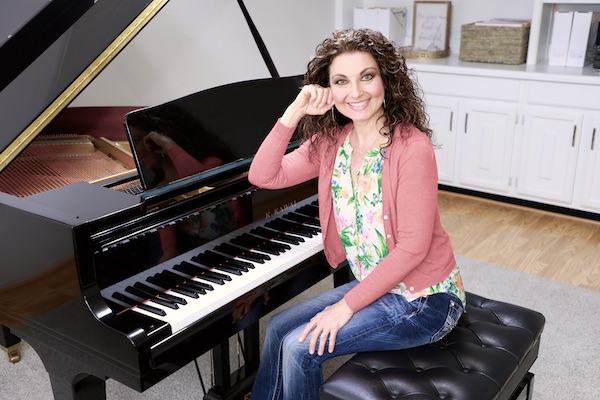
Hi! I’m Melody Payne, a pianist and piano teacher, educational resource author, a fun-loving wife to the most wonderful and talented hubby I could ask for, and a lifelong learner who loves to share. I want to make your life as a music teacher easier by writing and sharing helpful and relevant music teaching articles, and by creating educational resources with your very own students in mind. If you are a parent who wants to enroll your child in piano lessons, I’d love for us to get started building those skills that can give your child a lifetime of musical enjoyment!




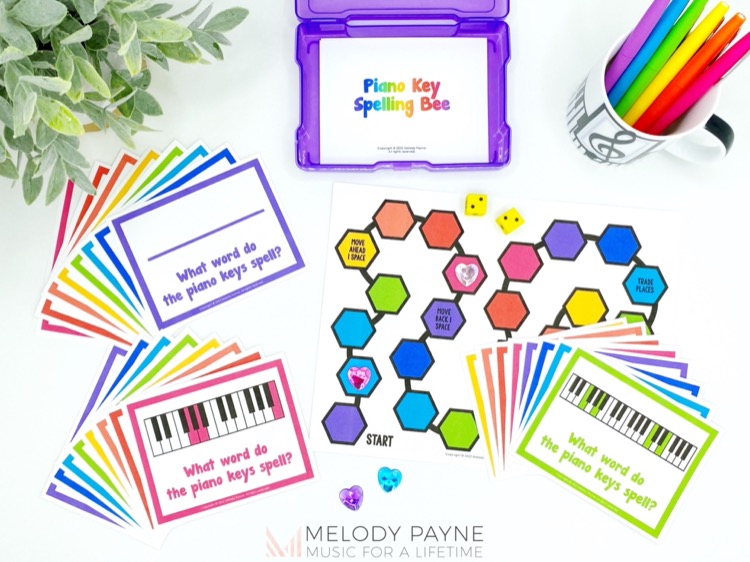




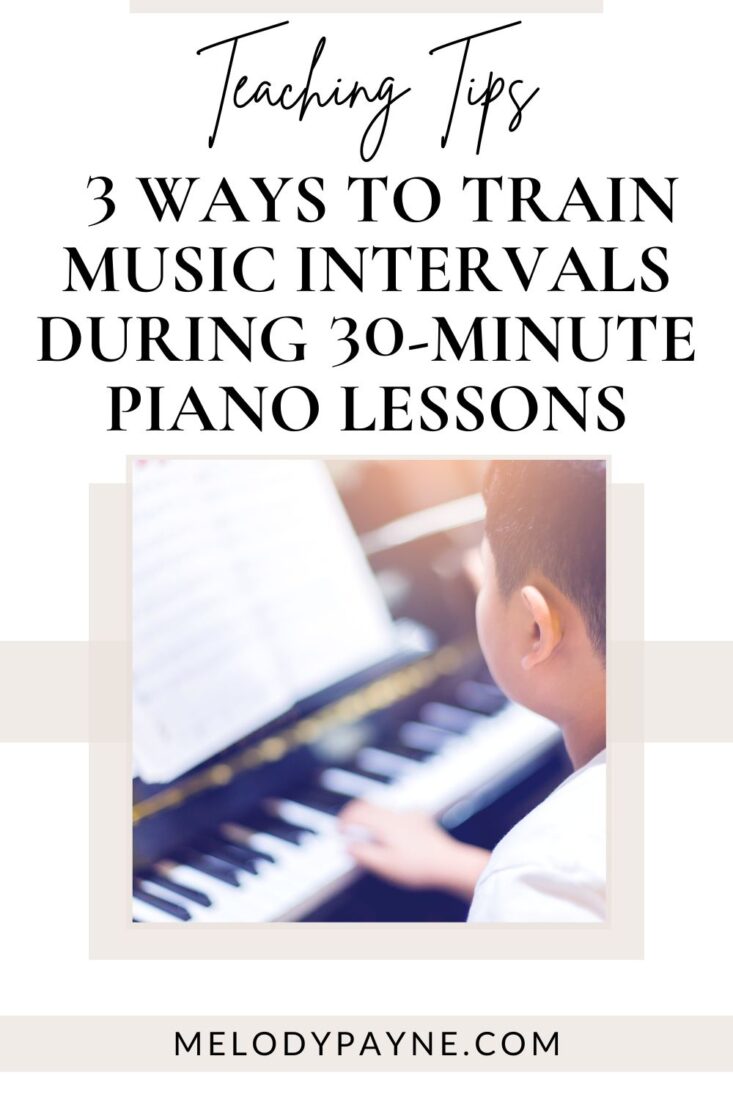
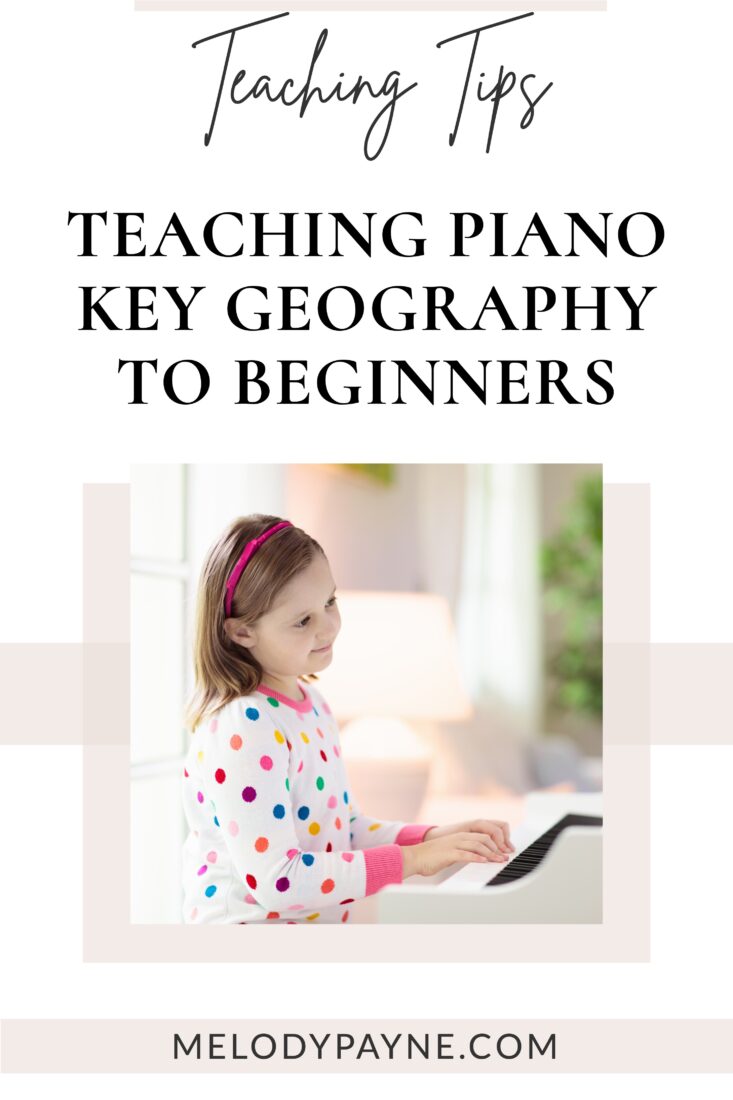
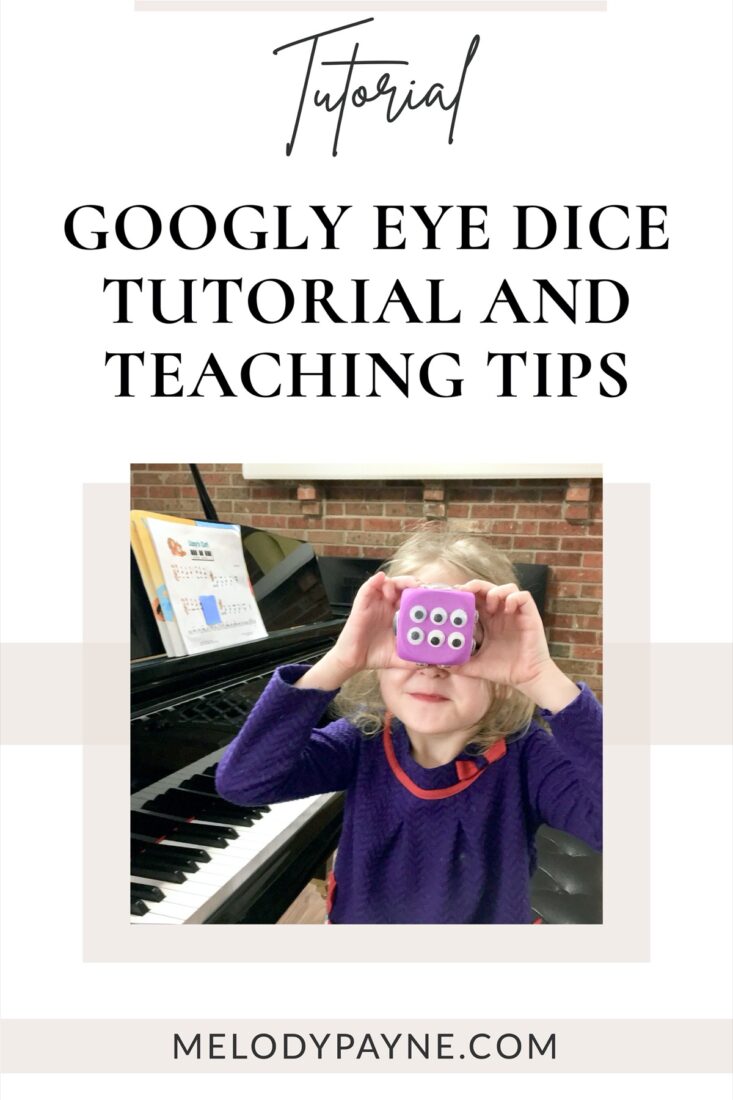

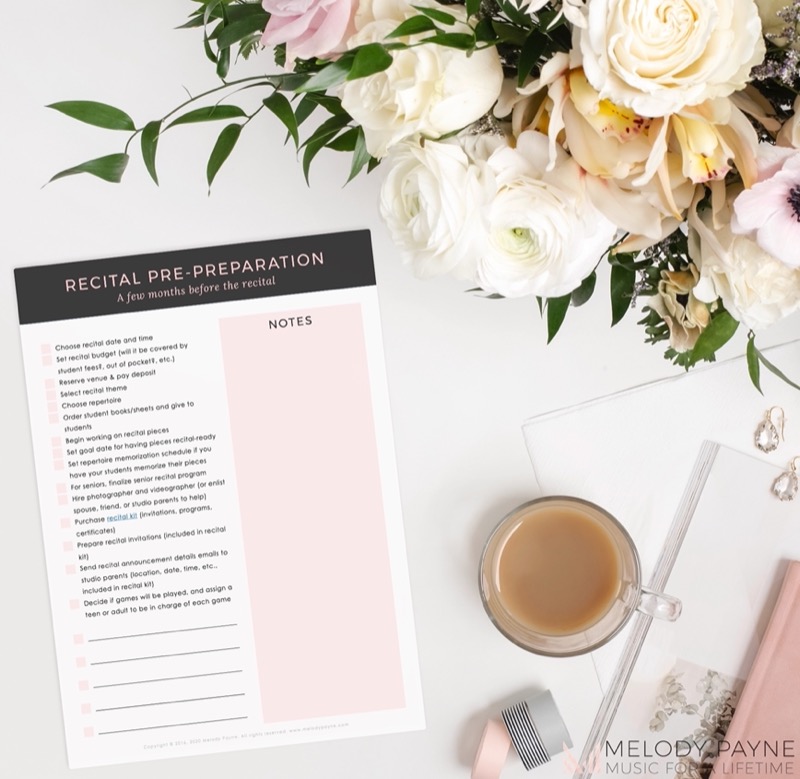
This Post Has 2 Comments
What great ideas, Melody! The video was very helpful, and I like how you give the students something to get them started. I have in the past used picture cards to let students improvise, but they are often intimidated to actually start playing anything. Thank you for sharing all the ideas in this post!
Thanks so much, Barbara! I’ve found that some students are much more likely to give improvisation a try if I can give them more specific “rules” they can follow. This can free them up for more exploration at the piano and open the door to a whole new world for them! 🙂